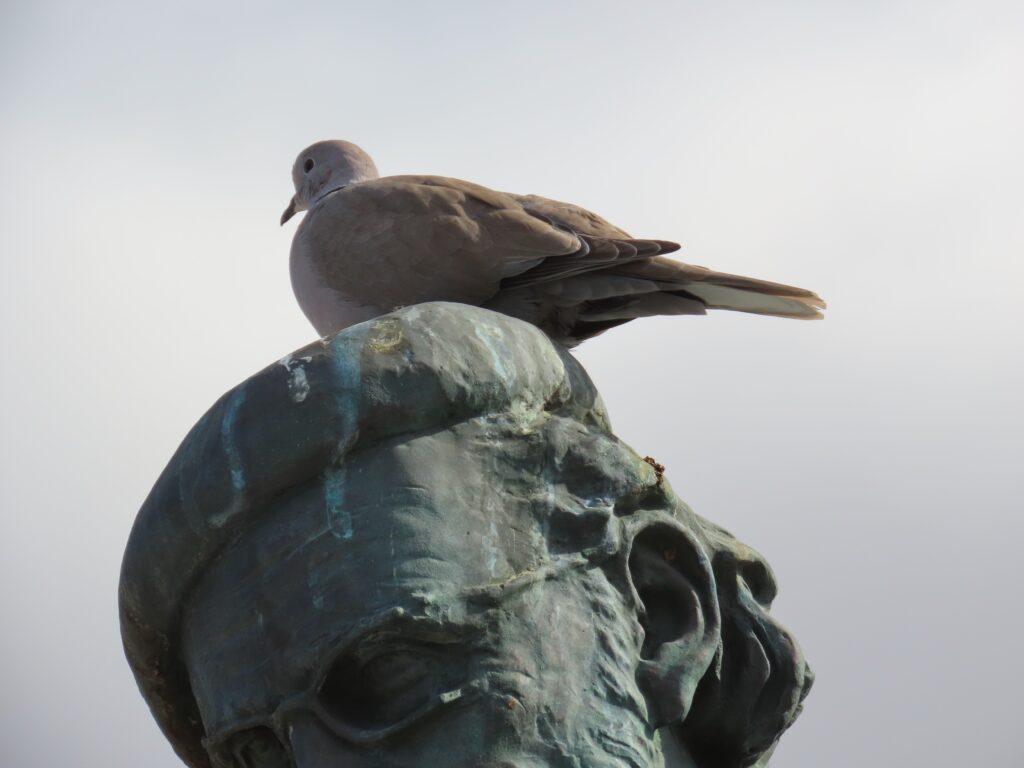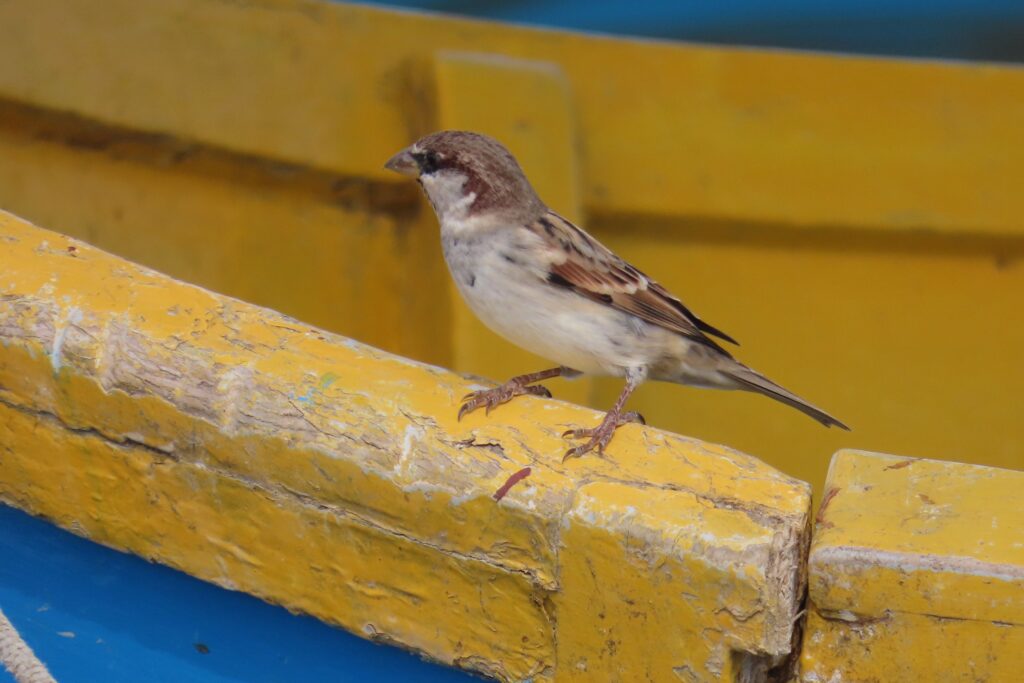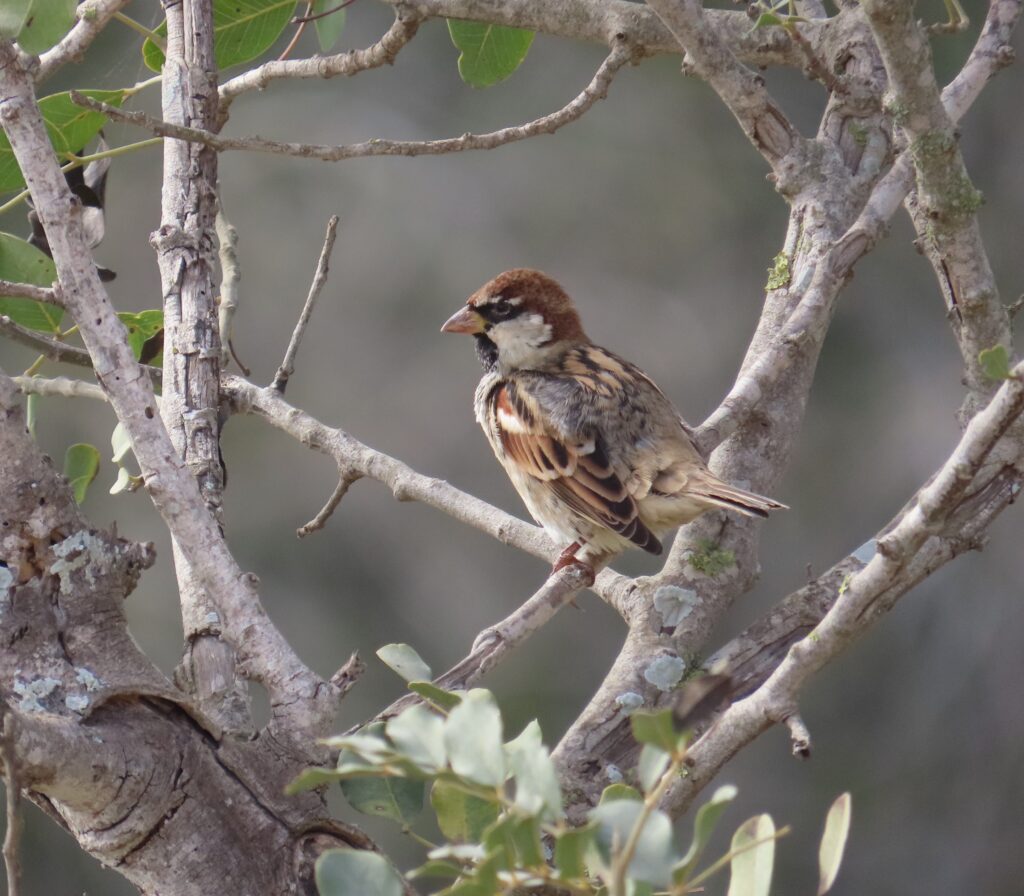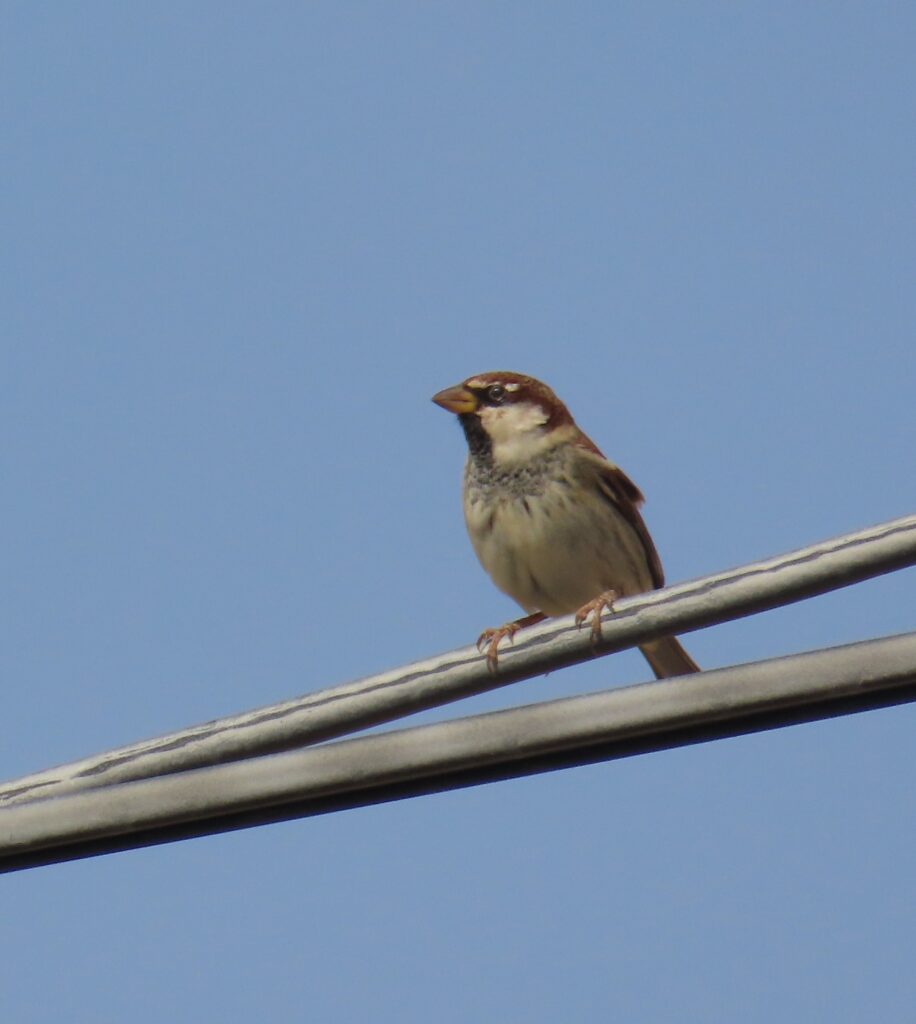My previous blog was from a sclerophyllous (“hard leaves”) ecoregion of Greece; this one is from the Tyrrenhian-Adriatic Sclerophyllous and Mixed Forests (PA1222), the similar ecoregion of southern Italy and Malta, rounding out our recent trip to the Mediterranean. Because there is so little original vegetation left in the areas we visited, its hard to get a feel for what are the differences but overall it seemed like Malta and Puglia in Italy were less arid than Greece, and the natural vegetation habitats tended more to oak woodlands rather than shrublands and maquis.
What was common to both was a scarcity of birds and when they were around, they were elusive and difficult to see or photograph. Here are a couple of photos from Malta.


I was often reduced to looking at lowly House Sparrows. It turns out however that House Sparrows are pretty interesting, have their share of skeletons in the closet (or at least in the museum drawer), and offer lessons about how species are evolving and changing.
Latin for sparrow, Passer also lends its name to the sparrow family Passeridae which are the Old World sparrows (our New World sparrows are not closely related and are in the family Emberizidae). Furthermore, we have the Passeriformes, or “sparrow-like birds”, the order of songbirds accounting for more than half of the World’s birds.
The genus Passer of “true sparrows” first evolved in Africa and includes 28 species native to Africa and southern Eurasia. In a previous blog I touched on the largest species in the genus, Kenya’s Chestnut Sparrow Passer eminibey. The best-known in the genus is the House Sparrow, Passer domesticus, the World’s most widely distributed wild bird. It is native to much of Europe and Asia and extreme northern Africa but it is also introduced and thriving worldwide just about everywhere where there are people. There are about 11 recognized subspecies. In North America, introduced populations derive from the English P. domesticus domesticus. My Dad called them “English Sparrows” – he was not wrong. Present in North America since 1852, “our” House Sparrows are evolving rapidly and are now as distinctive as some of the described races of the species.
The photo below shows a fairly typical House Sparrow, this one photographed in West Kelowna, BC. They look very similar in their original range in most of Europe and northern Africa. Note the grey crown, lack of white above the eye, and the black on the throat not extending to the flanks.

A very close relative is the Spanish Sparrow, Passer hispanoliensis, which differs by the male having a chestnut crown, black of the bib extending as prominent black streaking on the flanks, and having a prominent white line above the lores. According to the map in the authoritative Birds of the World (BoW), the Spanish Sparrow occurs in patches in Spain, Portugal, Sardinia, in north Africa, and in Asia. It does not occur in Hispaniola and presumably was so named as a result of a mix-up in the museum tray.
I originally assumed that on our European trip to Greece, Italy, and Malta, that the House Sparrows I would be hearing and seeing everywhere would be Passer domesticus but that turned out not to be the case.
The main surprise was that in Italy, there are no House Sparrows, only…Italian Sparrows, Passer italiae. They have only recently been separated out; my trusty but outdated European field guide did not even list this species, noting only that Italian birds were a bit different from House Sparrows. Not realizing at the time that this was an exciting (!?) new species for me, I didn’t get any photographs in Italy. The female of the Italian Sparrow is indistinguishable from a House Sparrow female but the male is essentially intermediate between a House Sparrow and a Spanish Sparrow. The crown is chestnut, there is a bit of a white eyebrow, and there is no black on the flanks.
The Italian Sparrow, according to the map in BoW, is native to Italy, as well as Corsica, far-away Crete (seems unlikely?), and Malta (but see below). It is now usually considered a stable and distinctive species but likely originated as a hybrid swarm between House Sparrows to the north and Spanish Sparrows to the south. Alternatively, one study has suggested that it originated in North Africa and spread to Italy, subsequently becoming extirpated in Africa. OK, twist my arm, I accepted in Puglia the Italian Sparrow as a lifer!
As noted above, the BoW map includes Malta in the range of the Italian Sparrow (but the text acknowledges it may be a hybrid population there). Thus my next surprise was arriving in Malta and finding that eBird only permitted me to record… Spanish Sparrows, Passer hispanoliensis. While my spouse and the rest of my group sought out cathedrals and Maltese delicacies, I was on the hunt for sparrows! A few photos below (14-16 October 2024) from Malta show some with a grey crown, some with a chestnut crown, some with a bit of a white eyeline.



To my eye, they didn’t actually look like Spanish Sparrows and were a mish-mash between House Sparrows, Italian Sparrows, and Spanish Sparrows. I would have liked to have more opportunities to study them in Malta and convince myself these were Spanish Sparrows. But OK, give my arm another twist, the Spanish Sparrow accepted in Malta as another lifer!
Remaining mysteries suggest the need for a new trip to the neighbourhood of Italy (and yes France, further wine exploration!). eBird does not recognize House Sparrows in Italy or Malta but it seems possible to me that this ubiquitous urban species could occur there as introduced populations alongside Italian Sparrows, at least in major city centres? The identity of southern Italian and Maltese sparrows (“true” species or hybrids?) needs more attention and photos. And stay tuned for exciting sparrow news to come from Morocco, where my guide shows both House Sparrows and Spanish Sparrows as widespread…
One of the commonest birds in the world, and yet still so much to learn!
Excellent to read that you picked up two new lifers! The House Sparrow is indeed successful around the world. I just googled Nepal and it is the most common bird of Nepal. We just had family visit Australia who saw 200 sp but not sure if they listed the House Sparrow. However, in Western Australia they are identified as a pest; biosecurity alerts are circulated when they are spotted, followed by government surveillance and removal. Supposedly there are no House Sparrows in Western Australia. Looking forward to Morocco blog and follow-up on the House Sparrow.
Hi Douglas, good to hear from you. While I leave the analysis of Passer ssp to you, I like to comment that there is a slow but considerable recovery going on at the Mediterranean shrub vegetations. In the 60s my parents took us on vacations from Spain to Greece and everywhere the shrubs were chewed up by goats, goats and more goats. Over the years I have watched the sites of goats decreasing and often disappearing while in more Northern Mediterranean regions, like the Marques in Italy (North of Rome) and the Pyrenees, shrublands grew into dense low forests in the regional or national parks. Recovery of more southern shrublands will go much slower with less rainfal and now more frequent bush fires. Nevertheless, further recovery is to be expected.
As birds go, Peter Scott once joked that the British have a description of every bird and the French a recepi. Again when I was teenager, all mediterranean countries had mist nets covering the entire Mediterranean region and no protected areas. Now all those countries north of the sea have fabulous reserves, mist nets are forbidden, birds are protected, Brown bears kill people, wolves show up in villages. The EU has successfully forced all its member countries to protect wildlife very effectively. However, once our feathered friends cross the sea, they are welcomed by literally millions of mist nets and end up in the stomachs of North Africans. Nature conservation is a slow process, but one country at the time, nature becomes better protected, albeit that now climate changes is taking ever greater tolls.
Daan: what a delight to hear from you!! Thanks for your “historical” (yes, we are getting that old…) perspective on the Mediterranean scrublands. So good to hear that recovery is taking place but you are right, it’s slow. When are you coming up to Kelowna?
Really wonderful photos dad, clear and crisp! Even I was able to see the differences in the Grey and chestnut crowns.
My favourite is the dove on the Maltese fellow’s head though